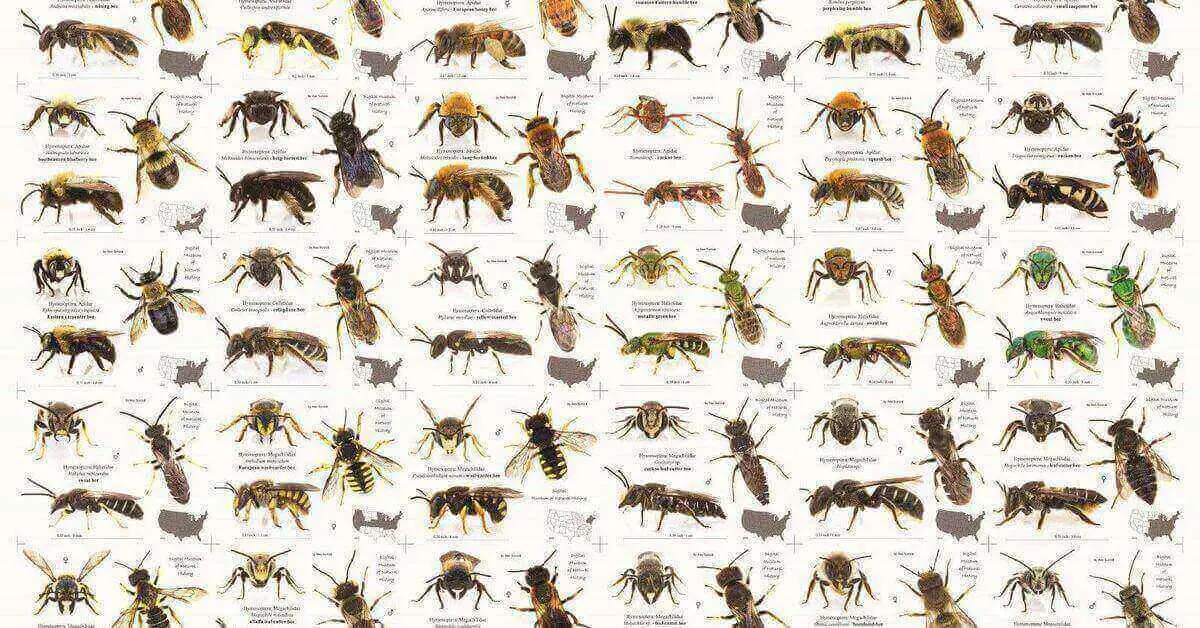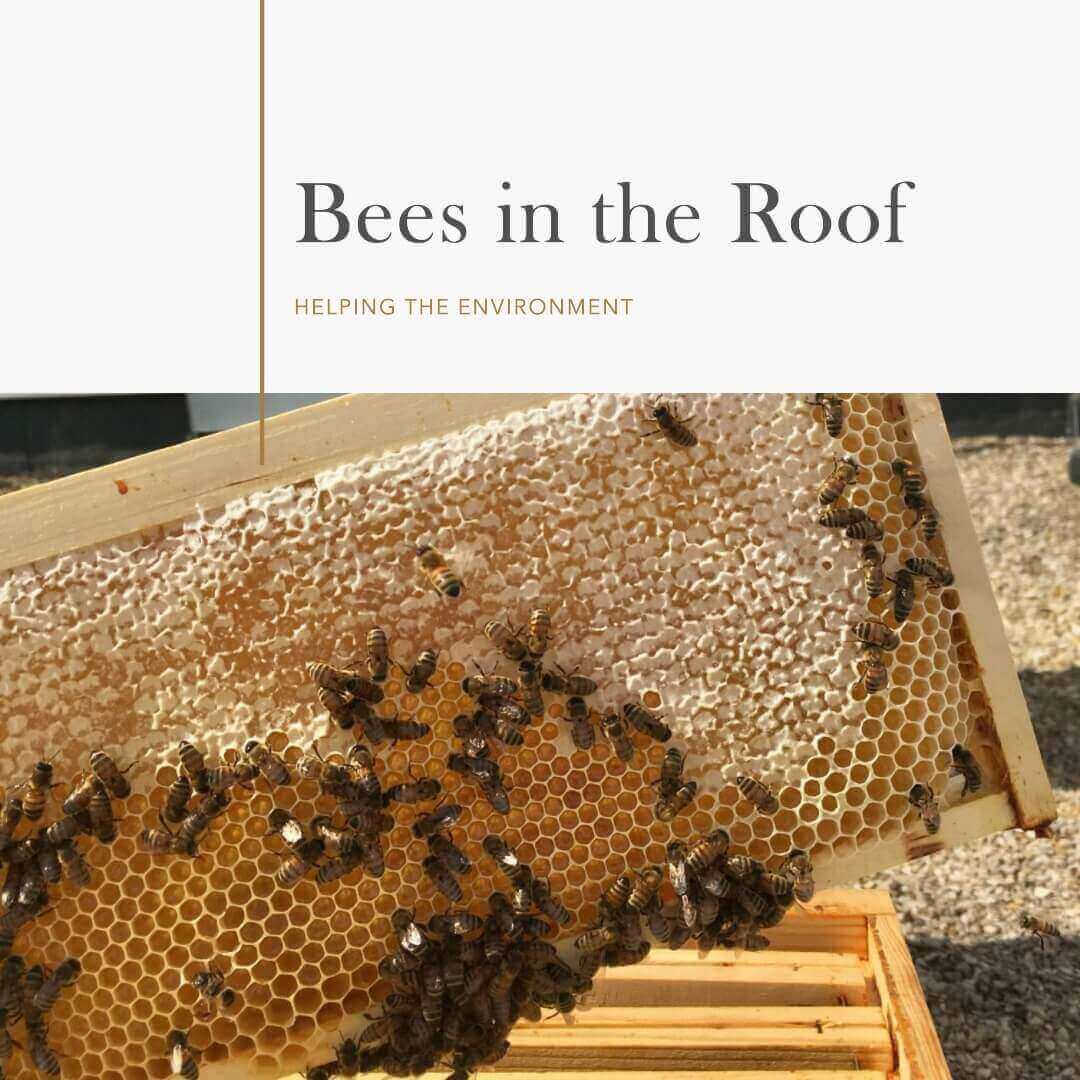Bees play a vital role in maintaining the balance of our ecosystem, and Andrena fucata is no exception. Also known as the “orange-patched mining bee,” Andrena is a solitary bee species that exhibits fascinating characteristics and behaviors. In this article, we will explore various aspects of Andrena fucata, from its habitat and identification to its behavior, life cycle, conservation efforts, pollination role, predators, and social structure.
Exploring Andrena Fucata Habitat
Andrena fucata primarily inhabits open grasslands, meadows, heathlands, and sandy areas with well-drained soil. These bees are commonly found in North America and Europe, including regions such as the United Kingdom and Germany.
These bees prefer nesting in sandy or loamy soils, creating burrows in the ground. They are often observed nesting in aggregations, forming small communities where multiple individual bees construct their nests in close proximity to each other.
Fucata Identification
To identify Andrena fucata, one can observe distinct characteristics that set them apart from other bee species:
- Coloration: Andrena fucata has a distinct black body with a patch of orange hairs on the abdomen, giving it the name “orange-patched mining bee.” This coloration is a useful identifier in the field.
- Size: These bees are typically small to medium-sized, with females measuring around 12 to 14 millimeters in length, while males are slightly smaller.
- Hair Patterns: Besides the orange patch on the abdomen, Andrena bee also exhibits dense hairs on its thorax and legs, aiding in pollen collection.
Andrena Fucata Behavior
Understanding the behavior of Andrena sheds light on their fascinating lifestyle and activities:
- Solitary Nature: Andrena fucata is a solitary bee, meaning they do not live in colonies like honeybees. Each female constructs and maintains her own nest.
- Foraging and Pollination: These bees actively forage for nectar and pollen, playing a crucial role in pollination. They visit a wide variety of flowering plants, ensuring the transfer of pollen for plant reproduction.
- Aggregation Nesting: While Andrena fucata are solitary bees, they often nest in aggregations, creating a small community of individual nests in close proximity to each other. This behavior can provide benefits such as increased mate availability and protection from predators.
- Nest Construction: Females of Andrena bee dig burrows in the ground, creating individual nesting chambers. These chambers serve as a safe haven for eggs and provide nourishment for the growing larvae.
Andrena Fucata Life Cycle
The life cycle of Andrena fucata encompasses various stages, each playing a vital role in the survival and continuation of the species:
- Egg Stage: After mating, the female bee lays her eggs within the nesting chamber she constructed. Each chamber contains a single egg.
- Larval Stage: The egg hatches, and the larva emerges. The larva consumes the provisions left by the female, consisting of a mixture of nectar and pollen, to support its growth and development.
- Pupal Stage: The fully grown larva transforms into a pupa, encased within a protective cocoon. During this stage, the internal structures of the bee undergo significant transformations.
- Adult Stage: After completing its metamorphosis, the adult bee emerges from the cocoon. It is during this stage that the bee exhibits its characteristic behaviors, such as foraging, pollination, and reproduction.
Andrena Bee Conservation
Conservation efforts are crucial to ensure the survival and well-being of Andrena bee and other bee species. Several initiatives focus on protecting their habitats and raising awareness about their importance:
- Habitat Preservation: Conserving the natural habitats of Andrena fucata, such as grasslands and meadows, is vital. Efforts are made to prevent habitat destruction and maintain suitable conditions for their nesting and foraging activities.
- Pesticide Reduction: Reducing the use of pesticides, particularly those harmful to bees, helps protect Andrena fucata and other bee species. Promoting environmentally friendly pest management practices is essential.
- Education and Awareness: Educating the public about the significance of bees and their role in pollination can foster appreciation and support for conservation efforts. Awareness campaigns aim to highlight the importance of preserving bee habitats and encouraging bee-friendly practices.
Andrena Fucata Pollination
Andrena fucata contributes significantly to the pollination process, playing a crucial role in plant reproduction:
- Generalist Pollinators: These bees are considered generalist pollinators, as they visit a wide range of flowering plants for nectar and pollen. Their foraging activities lead to the transfer of pollen between flowers, facilitating fertilization.
- Efficient Pollination: Due to their hairy bodies and behavior of frequenting various plants, Andrena fucata enhances cross-pollination, promoting genetic diversity within plant populations.
- Specific Plant Relationships: While Andrena fucata is a generalist pollinator, certain plant species may rely on these bees for pollination. Understanding the plant species associated with Andrena can aid in targeted conservation efforts.
Andrena As a Predators
Despite their essential role in the ecosystem, Andrena fucata faces threats from various predators:
- Spiders: Spiders, such as crab spiders and wolf spiders, can capture Andrena in their webs or ambush them on flowers.
- Insectivorous Birds: Birds that feed on insects, such as flycatchers and warblers, may prey on fucata and other bees.
- Parasitic Flies: Certain species of parasitic flies, such as bee flies, lay their eggs near Andrena fucata nests. The fly larvae then parasitize the developing bees.
Understanding the predators of Andrena is essential for evaluating potential threats and implementing conservation strategies to protect these valuable pollinators.
Related Artical:
- Andrena Aegypticola Friese: A Fascinating Bee Specie
- Andrena abbreviata Dour: Secrets of an Alluring Bee
- How Do Bees Mate?Reproduction of Honey Bees.
Andrena fucata Social Structure
It is primarily a solitary bee species, with individual females constructing and maintaining their nests. However, the phenomenon of aggregation nesting can create a sense of social structure:
- Aggregation Benefits: By nesting in aggregations, Andrena fucata can experience benefits such as increased mate availability and improved defense against predators. This social proximity can also facilitate information exchange between bees.
- Limited Interactions: While aggregation nesting offers advantages, the interactions between individual bees within the community are limited. Each female focuses on her own nest and offspring, resulting in a relatively independent lifestyle.
Summary
Andrena fucata, the orange-patched mining bee, represents a remarkable species of solitary bee with unique characteristics and behaviors. From its habitat preferences and identification traits to its behavior, life cycle, conservation efforts, pollination role, predators, and social structure, Andrena bee captivates us with its intricate role in our ecosystem.




